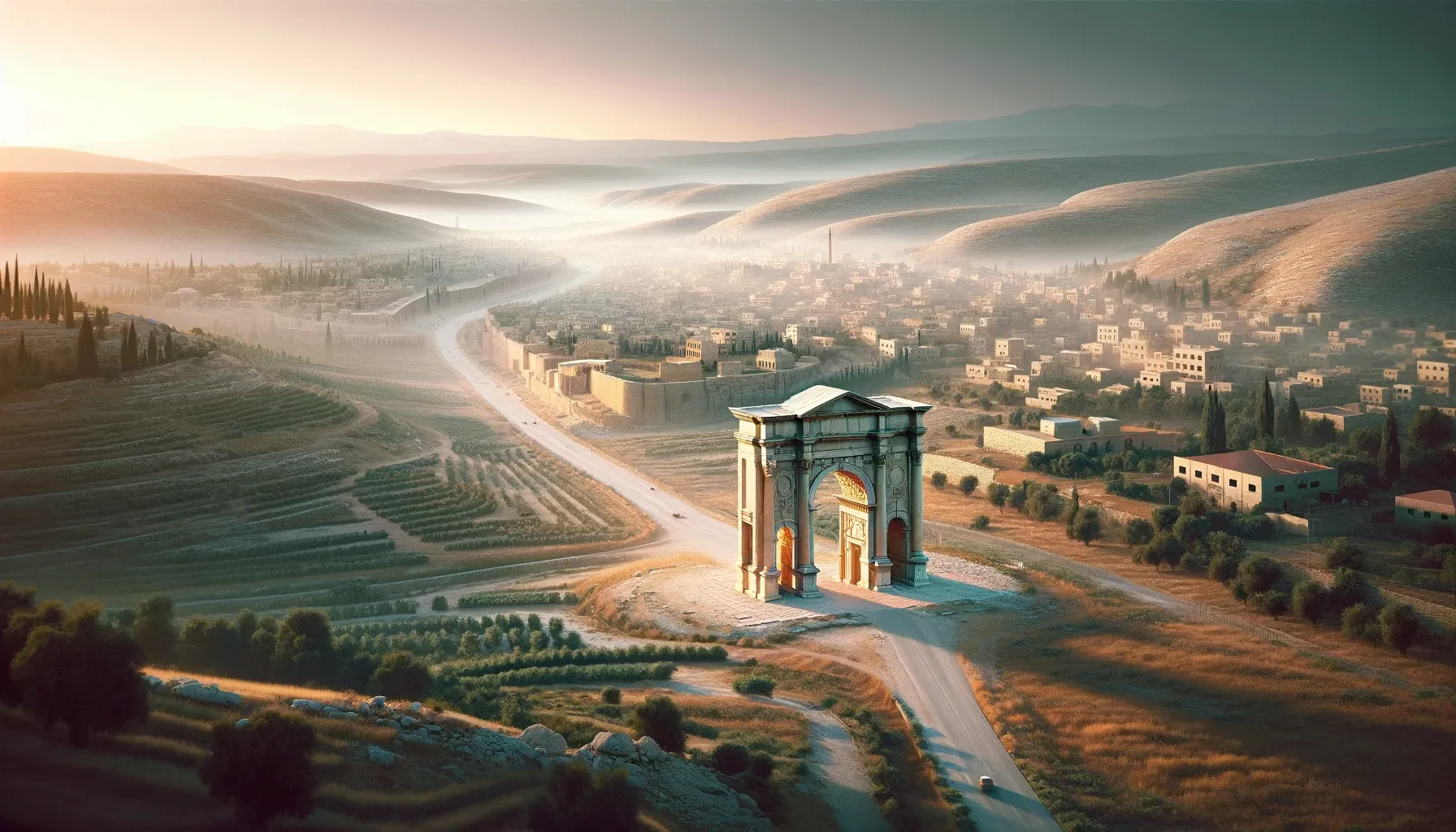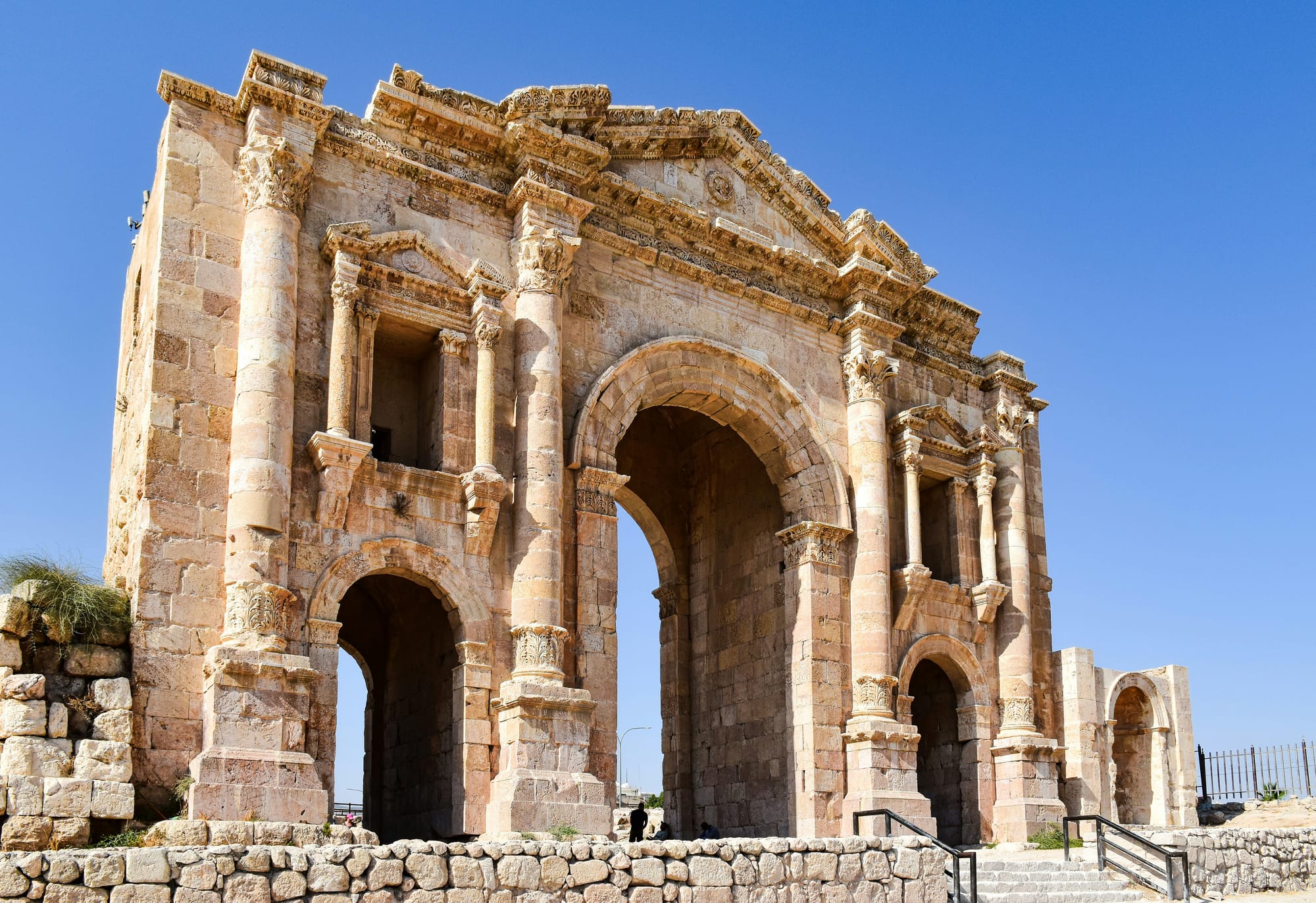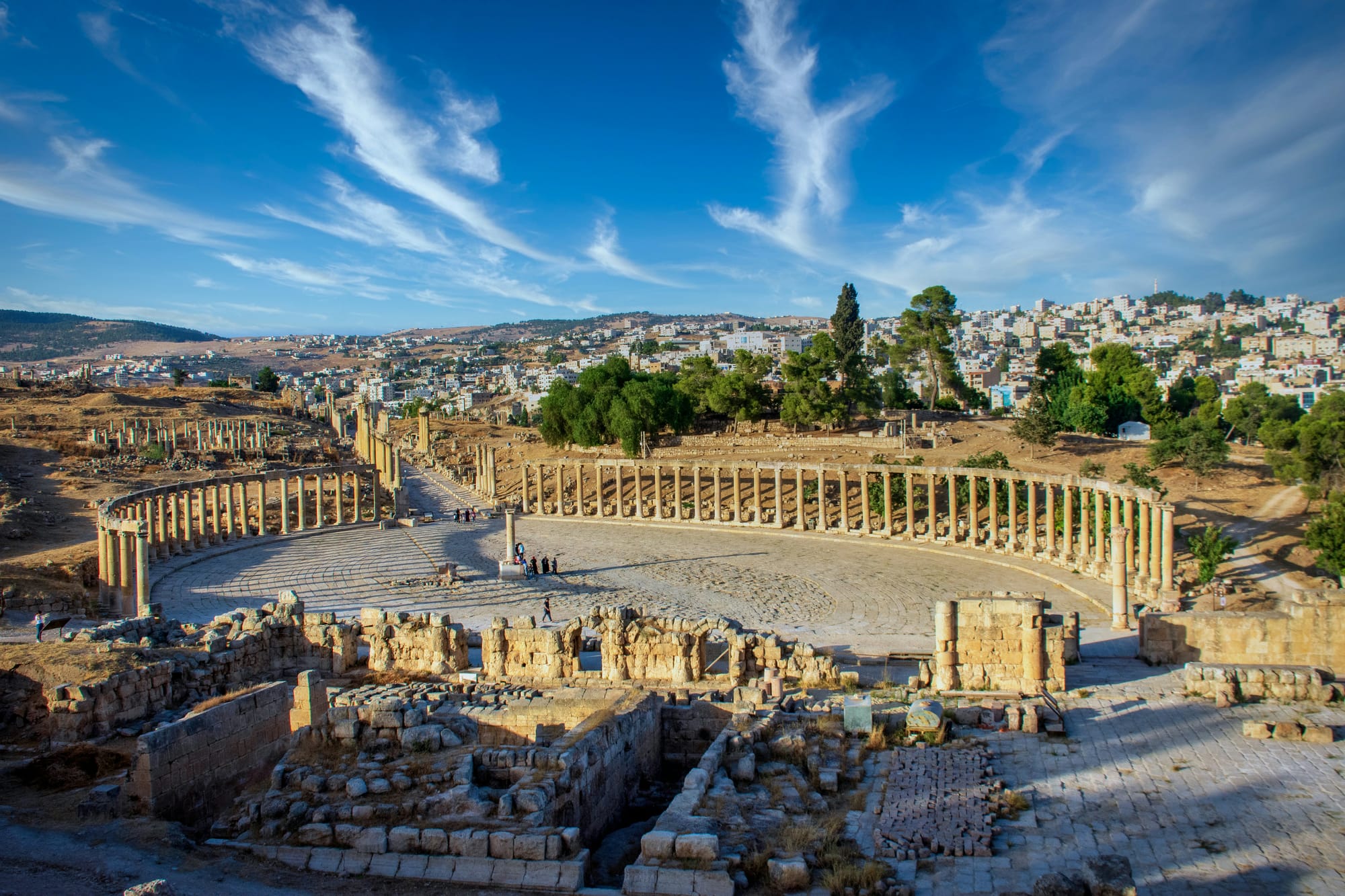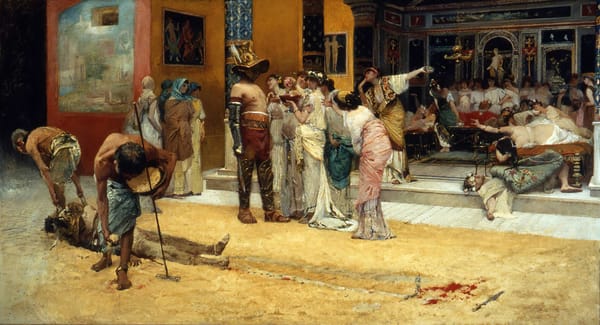Hadrian's Arch of Triumph in Ancient Jerash. A gateway to the Past.
In the heart of modern-day Jordan, Hadrian's Arch stands as a testament to Roman architectural prowess and imperial presence in the region.

Nestled in the heart of modern-day Jordan, the ancient city of Jerash unveils the grandeur of the Roman Empire through its well-preserved ruins, among which Hadrian's Arch stands as a monumental testament to Roman architectural prowess and imperial presence in the region. Constructed to commemorate Emperor Hadrian's visit in the winter of 129–130 AD, this towering structure originally measured nearly 22 meters in height and served both as a commemorative arch and a grand entrance to the city, hinting at plans for expansion that never came to fruition.
The massive work
Hadrian's Arch, positioned 460 meters to the south of Gerasa's (now Jerash, Jordan) primary Southern Gate, is a rectangular edifice standing 21 meters tall with three arched entrances. This structure features a unique dual façade that faces both north towards the city and south towards the road, with each façade sharing similarities but differing in architectural nuances. The main archway surpasses the side ones in size and height, and is flanked by four colossal Corinthian columns, each mounted on a pedestal and base adorned with acanthus leaves.
The architraves of the central and side arches rest on pilasters capped with capitals, with the side archways each crowned by matching niches situated on a small entablature supported by pilasters with capitals. These niches are bordered by Corinthian columns, holding up a segmented triangular pediment. According to archaeologist Kraeling's findings, the arch's original design likely included two stacked niches beside each side arch, with the lower niche enclosed by pilasters under a semicircular gable, and the upper niche also within pilasters but beneath a triangular gable. An attic, potentially bearing a commemorative inscription and adorned with an acanthus leaf floral frieze, topped the arch. The frieze's center was finished with a triangular cornice.

Jerash, once a thriving city under Roman rule, was part of the Decapolis league, experiencing a golden age of prosperity and architectural innovation. The city's significance is underscored by the impressive set of Roman ruins that dot its landscape, with Hadrian's Arch marking a splendid entry point into its historic core.
The Arch, with its triple-arched gateway, was not just a ceremonial structure but also a functional part of the city's urban design, leading visitors into the heart of Jerash.
Why was the arch built?
The Hadrian's Arch in Gerasa was constructed between 129-130 CE during the emperor's visit to this Decapolis city. Its primary function was to commemorate this imperial visit, but its placement to the south suggests it also aimed to signal plans for expanding the city further south—plans that ultimately were not realized. The arch combines Roman architectural styles with local elements, such as the acanthus bases adorning the columns at the façade, reflecting Nabatean architectural influences.
Gerasa, like other Decapolis cities, was part of the Arabia Petraea province, established in 106 CE following the dissolution of the Nabatean kingdom. Despite Gerasa's autonomy and its closer association with the province of Syria, the influence of Nabatean design is noticeable in many of the city's landmarks.
Then and now
Over the centuries, Jerash has seen the rise and fall of empires, bearing witness to the ebb and flow of fortune that characterized the region. From its peak during Roman times through periods of Byzantine and Islamic rule, the city's architecture, including Hadrian's Arch, offers a window into the past, showcasing the diverse cultural influences that have shaped it. The Arch itself, with its distinctive architectural features such as engaged columns and Corinthian capitals, reflects the blend of Roman and local styles that characterize Jerash's ruins.
The restoration efforts in the early 2000s have brought Hadrian's Arch closer to its former glory, making it a focal point for visitors seeking to connect with the ancient world. Today, the Arch not only stands as a symbol of Hadrian's visit but also as a reminder of Jerash's historical importance and its role as a cultural crossroads in the Roman Empire.

In exploring Hadrian's Arch, visitors to Jerash embark on a journey through time, tracing the footsteps of ancient Romans, witnessing the architectural marvels they left behind, and appreciating the enduring legacy of Roman engineering and urban planning.
The Arch, with its grand scale and intricate details, serves as a vivid reminder of the imperial ambitions and artistic achievements of the Roman era, inviting modern observers to ponder the complexities of history and the permanence of stone against the backdrop of passing centuries.









About the Roman Empire Times
See all the latest news for the Roman Empire, ancient Roman historical facts, anecdotes from Roman Times and stories from the Empire at romanempiretimes.com. Contact our newsroom to report an update or send your story, photos and videos. Follow RET on Google News, Flipboard and subscribe here to our daily email.
Follow the Roman Empire Times on social media: